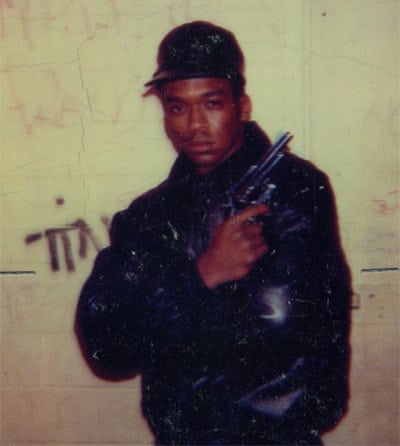AS HIP HOP CELEBRATES 25 YEARS OF BEATS AND RHYMES, TIME TO RECOGNISE RAP'S FORGOTTEN NEW ENGLAND HEARTLAND. BY ALEX STIMMEL.
In Hip Hop, location has always been crucial. But if the East Coast, West Coast and Dirty South have all had their beefs, boasts and peri- ods of stylistic dominance, there's one early rap nerve centre that's been all but written out of history. In Connecticut in 1979, 20 miles north-east from the hip hop ground zero that is New York City, there was a small but determined handful of young rappers and DJs trying for their own place in rap history.
Named for the Tri-State area, the compilation The Third Unheard (Stones Throw) tells their story. Prime mover was Tony Pearson, owner of New Haven's Magic Records. A DJ under the name Mr. Magic, Pearson sensed big changes coming when he heard Kurtis Blow's pioneering November 1979 debut, Christmas Rapping. "At the time, it was just a little song," he recalls today, "but when The Sugar Hill Gang came out, I thought, That's the noise I been wanting to make for the last four or five years!" That month he recorded Rappin' With Mr. Magic. With a chanted coda that read as a peculiar statewide APB ("Ansonia? We Down! Waterbury? We down!"), it was the first rap track released in Connecticut and among the first rap singles cut anywhere. Inspired, Pearson closed his shop, started a label and began selling records from his car: "I thought [rap] was a way to make some money."
The music on The Third Unheard may be 25 years old, but the sound is fresh. Three-quarters of the tracks bear Mr. Magic's stamp, including Get Up (And Go To School) by his 12-year-old nephew Jerry. Pearson re-named him 'Pookey Blow', reasoning, "Maybe they'll think he's Kurtis Blow's kid and buy his goddam record." (Pookey retired aged 15 in 1983, one of the few MCs to use a kazoo in his act). Also heavily represented is nearby city Bridgeport. A younger, truer analogue to the Bronx events, Bridgeport's block parties centred around teenage crews like L.O.D. and Chillie 3 MCs, and DJs like Starchild. They believe their town, not New Haven, was first to get hip to rap. Says Starchild (né Melvin Lowe Jr, namechecking P-Funk long before Dr Dre), "I came from New Haven in '76 and was a top DJ. When I left there was no hip hop going on. In Bridgeport we claimed we started hip hop. When my crew did something, we did it big… thousands of people."
Mr. Magic, who moved to Bridgeport and became a producer, was the first to clear samples and use a live band to recreate grooves. "New York was coming off beats and in the Bronx it was more disco," says Starchild. "We had the straight funk."
But the Connecticut crews were not keen to test their luck in New York and New York ignored them. Mr. Magic worked on in music with varying levels of success, but vividly recalls his early work. "When you make a rap record in 1979 you were in the birth of mother-fucking hip hop," he says. "(But) none of it matters 'cos it didn't make any money. But it lives in my mind. It never dies as long as I can think of it."
